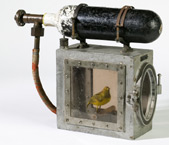Dr. Gary Carlson’s wind Commentary in STrib
November 9th, 2010
In yesterday’s STrib there was a Commentary written by Dr. Gary Carlson, of Northfield. He gave a very accurate impression of what it is to go to a Rice County Planning Commission meeting. FRUSTRATING! To put it mildly. He also has started digging into health impacts of wind. He’s put himself out as a canary:
Here’s his Commentary:
Gary Carlson: Wind energy’s ripple effects
Once I learned how turbines can affect people, I had to speak up.I know environmental sensitivity; these are the patients I take care of every day.
We lost four and tied one (tabled for now). I felt devastated.

